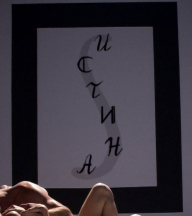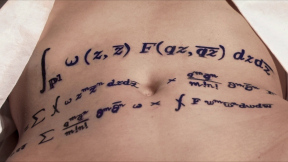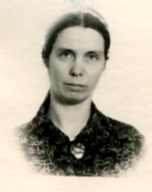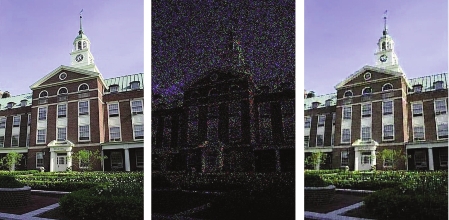On the Perfidy of Negative Numbers
Tanya Khovanova, Alexey Radul
Perfidy is to parity as odious is to odd and evil is to even. As a reminder, odious numbers are numbers with an odd number of ones in their binary expansions. From here you can extrapolate what the evil numbers are and the fact that the perfidy of an integer is the parity of the number of ones in its binary expansion. We live in a terrible world: all numbers are perfidious.
So why are we writing about the perfidy of negative numbers? One would expect it to be a natural extension of the perfidy of positive numbers, but it turns out that the naive way of defining it doesn’t work at all. Is there hope? Could negative numbers be innocent of evil and free of odiousness? Is zero an impenetrable bulwark against perfidy? Not quite, but something interesting does happen to evil as it tries to cross zero. Read on.
To define perfidy for negative numbers, let us study how perfidy behaves for positive numbers. It is easiest to think about the perfidies of power-of-two-sized chunks of non-negative integers at a time. Let us denote by Tn the string of perfidies of the integers from 0 to 2n−1, with evil being zero and odious being 1. So T0 = 0, T1 = 01, T2 = 0110, T3 = 01101001, …. The recurrence relation governing the Tn is Tn+1 = TnTn, where T is the bitwise negation of the string T, and juxtaposition is concatenation. The limit of this as n tends to infinity is the (infinite) sequence of perfidies of non-negative integers. This sequence is called the Thue-Morse sequence: 0,1,1,0,1,0,0,1,1,0,0,1,0,1,1,0,1,0,0,….
So defining the perfidy of negative numbers is equivalent to extending the Thue-Morse sequence to the left. If we are to define “the” perfidy of negative numbers, that definition should preserve most of the properties of the Thue-Morse sequence after extension.
So, let’s see. We asked around, and most people said that the binary expansion of a negative integer should be the binary expansion of its absolute value, but with a minus sign. Defining perfidy as parity of number of ones in this binary expansion corresponds to the following extended Thue-Morse sequence in which we mark values corresponding to negative indices with bold font: … 0, 1, 1, 0, 1, 1, 0, ….
One of the major properties of the Thue-Morse sequence is its fractal property: if you replace every zero of the Thue-Morse sequence by 0,1 and every one by 1,0, you will get the Thue-Morse sequence back. Clearly, our new extended sequence doesn’t have this property.
Another set of properties for the Thue-Morse sequence, called avoidance properties, is a long list of patterns that the sequence avoids. For example, the Thue-Morse sequence doesn’t contain any overlapping squares — patterns axaxa, where a is a character and x is a word. But you can see above, our first extension contains it. So this definition is wrong, not just once but twice (and two wrongs only make a right under very unusual circumstances). Perfidy is stymied by the cross-over from zero to minus one. Are negative numbers protected from the ravages of evil? (and odiousness?)
Unfortunately, there are many people, for example John Conway, who inadvertently extend the reach of perfidy by arguing that the binary expansion of a negative integer should be different. Indulge in a flight of fancy and imagine the binary expansion that consists of infinitely many ones to the left: …1111. What happens when you add 1 to it? The carry gets pushed infinitely far away, and you get …000000 — zero. So it is quite reasonable to let …1111 be the binary expansion of −1. Similarly, the string …1110 represents −2, …1101 represents −3, etc. Continuing this we see that the binary expansion of a negative integer −n is the bitwise negation of the binary expansion of n − 1 (including the leading zeros). This is called the Two’s complement representation.
Why is two’s complement a reasonable representation? Suppose you were trying to invent a binary notation for negative numbers, but you wanted to pursue uniformity by not using a minus sign. The problem is that the standard definition of the binary representation allows you to represent only positive numbers. But you can solve this problem with modular arithmetic: modulo any fixed N, every negative number is equivalent to some positive number (by adding enough multiples of N), so you can just represent it by representing that positive number. If you choose N to be a power of two, modding out by it is just truncation of the binary representation. If you let those powers of two tend to infinity, you get the two’s complement representation described above.
Aside: When you are building a computer, uniformity is money, because special cases cost special transistors. The two’s complement idea lets one build arithmetic units that just operate on positive numbers with some number of bits (effectively doing arithmetic modulo 2k), and leave the question of negativeness to the choice of representatives of those equivalence classes.
If we take two’s complement as the binary expansion of negative numbers, how will we define the perfidy? Is the number of ones in the infinite string …1111 corresponding to −1 even or odd?
We can’t answer that question, but we know for every binary expansion of negative numbers the parity of the number of zeroes. Thus we can divide all negative integers in two classes with different perfidy. We just do not know which one is which.
Let us consider two cases. In the first case we consider a negative number odious if the number of zeroes in its binary expansion is odd. The corresponding extended Thue-Morse sequence is: … 0, 1, 1, 0, 0, 1, 1, 0, …. The negative half is the reflection of the classical Thue-Morse sequence. In the second case we consider a negative number odious if the number of zeroes in its binary expansion is even. The corresponding extended Thue-Morse sequence is: … 1, 0, 0, 1, 0, 1, 1, 0, …. The negative half is the bitwise negation of the reflection of the classical Thue-Morse sequence.
Can we say that one of the sequences is better than the other? Both of them respect the fractal property of the classical Thue-Morse sequence. Let us look at the avoidance properties. The avoidance properties are symmetric with respect to switching zeroes with ones and with respect to changing the direction of the sequence. Hence, the negation, the reflection, and the reflection of the negation of the Thue-Morse sequence will continue to respect these properties.
Thus, we only need to check the avoidance properties of the finite subsequences that span both negative and non-negative indices. We claim that for both definitions of perfidy, any finite middle subsequence of the extended Thue-Morse sequence occurs as a subsequence in the classical Thue-Morse sequence. So any avoidance properties that are true for the Thue-Morse sequence will also be true for both extensions.
Indeed, it is easy to show that the strings T2n defined above are palindromes. So for the first definition of perfidy the string in the middle will be a substring of T2nT2n for some large n, and for the second definition a substring of T2nT2n. But the classical Thue-Morse sequence contains the subsequence T2nT2nT2nT2nT2nT2nT2nT2n. So whichever way we extend the Thue-Morse sequence to the left any finite middle part will always be a repetition of a piece in the classical Thue-Morse sequence. Thus, all the avoidance properties will hold.
We see that there are two logical ways to define perfidy for negative integers. There are two clear groups of numbers with the same perfidy, but which is called evil and which odious is interchangeable. So evil doesn’t stop at zero after all, but at least it gets an identity crisis.
Share:
 I met Ed (Edik) Frenkel 20 years ago at Harvard when he was a brilliant math student of my now ex-husband, and a handsome young man. Now, at 42, he is a math professor at Berkeley and he is even hotter. He made a bizarre move for a mathematician: he produced and starred in an erotic short movie,
I met Ed (Edik) Frenkel 20 years ago at Harvard when he was a brilliant math student of my now ex-husband, and a handsome young man. Now, at 42, he is a math professor at Berkeley and he is even hotter. He made a bizarre move for a mathematician: he produced and starred in an erotic short movie, 




